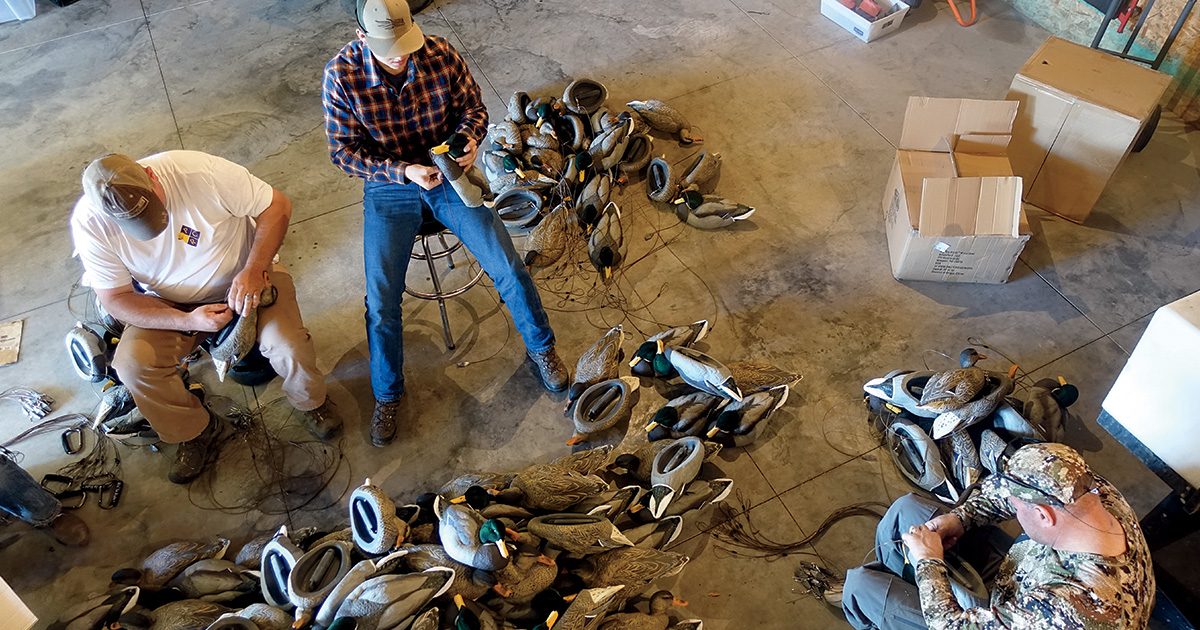Rigging Rundown
Everything you need to know about decoy lines and anchors
Everything you need to know about decoy lines and anchors

By Teresa Milner

Attaching anchors to your floating decoys so they don’t drift away when you’re hunting is kind of a big deal. But exactly how you rig them is your personal preference—one you’ll probably change as you grow and learn as a hunter.
Anchors
The weight on the end of your line can be almost anything, from heavy-duty construction bolts and fishing sinkers to anchors made specifically for decoys, including specialty strap weights that are bendable. The weight needs to be heavy enough to keep your decoy in place and to withstand any wind or waves in your spread.
Line
Decoy line should be tough, resistant to abrasion, and able to survive long periods of time in the water. Commercial decoy anchor cord is built specifically for rigging decoys, so it’s a good investment. You can also use heavy monofilament fishing line or even electrical wire housed in silicone.
Swivels and Crimps
Swivels and crimps eliminate the need for knots and can make putting out and picking up your decoys go more quickly. Swivels attach to the keel of the decoy, then connect to loops on different lengths of line, which are attached to the anchors. Crimps are a quick way to put loops in your line and can be easier than tying knots.
Homemade vs. Premade
If you’re a hunter who likes a good DIY project, try rigging your own decoys using your preferred type of anchor and line. If you’re not quite so hands-on, invest in some premade decoy rigging kits. Our friends at Rig’Em Right, for example, sell ready-to-use packs of Texas rigs. Just clip and go!
Standard Rig
This is one of the simplest and most reliable rigging methods out there. In this rig, an anchor is tied to one end of a line, and the other end is fastened to the decoy through the hole in the front or back of the keel. In the simplest setup, you use basic overhand and slip knots to connect all the pieces. After wrapping up the line, the weights are either wrapped around the neck or attached to the keel for storage and transport.
Texas Rig
One of the most popular decoy rigging methods is known as the Texas rig. A Texas rig has a tangle-free cord with a loop at each end. The cord attaches to the decoy via a clip. A sliding sinker moves up and down the cord, making it almost impossible to tangle but easy to set. Texas rigs come in various sizes for different water depths. The biggest advantage of Texas rigging is its ease of use.
Gang Rigs
Gang rigs are sometimes used by hunters with big decoy spreads. A gang rig is a long, single decoy line with a heavy anchor weight on one end and a series of short leader lines, each connected to a decoy, attached to the main line. Gang rigs can accommodate many decoys and are often used in deep, open water when hunting diving ducks.
If you’re a visual person, it helps to see these rigs in action. For some great video tips and ideas, head on over to DU’s YouTube channel.
Ducks Unlimited uses cookies to enhance your browsing experience, optimize site functionality, analyze traffic, and deliver personalized advertising through third parties. By continuing to use this site, you agree to our use of cookies. View Privacy Policy